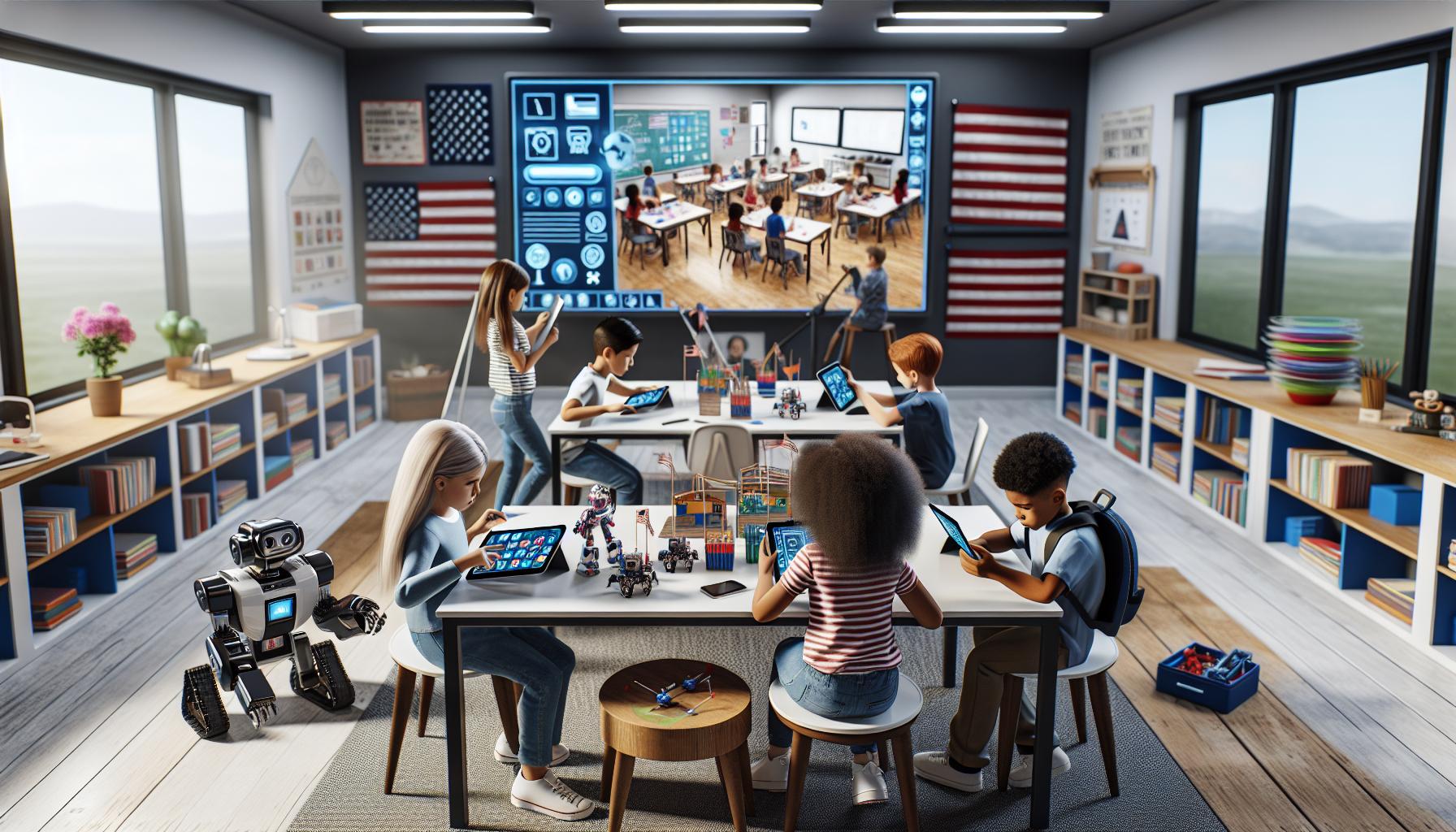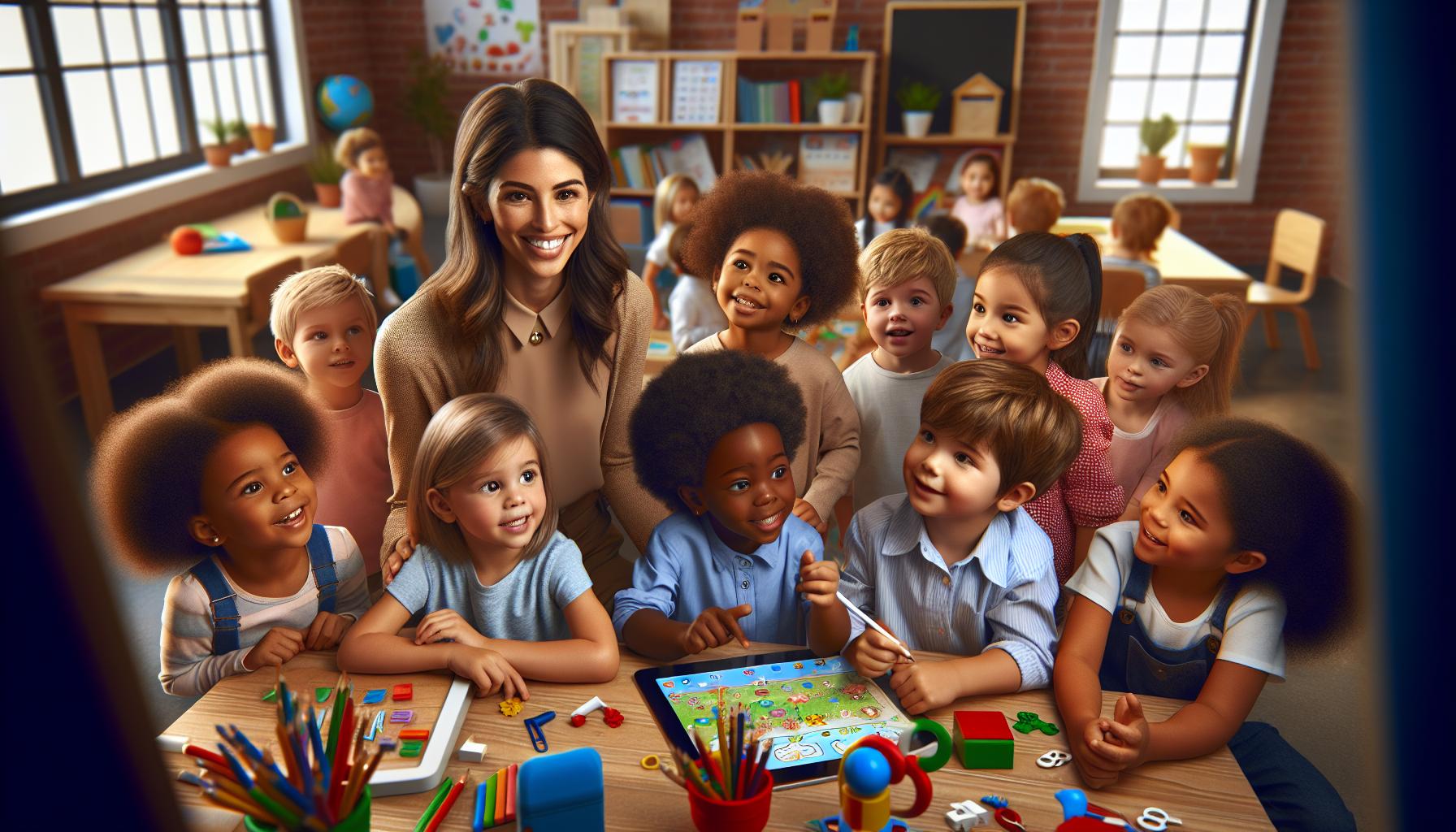Early childhood education is undergoing significant transformation, embracing innovative methods to nurture young learners. Educators are adopting play-based learning to spark creativity and critical thinking from an early age.
Technology plays a crucial role in modern classrooms, with interactive tools enhancing engagement and personalized learning experiences. Additionally, there’s a strong focus on social-emotional development, helping children build essential interpersonal skills.
These emerging trends highlight a commitment to creating well-rounded individuals prepared for future challenges. As early education continues to evolve, staying updated on these developments is vital for parents and educators alike.
Current Trends in Curriculum
Modern early childhood curricula adapt to evolving educational needs. These trends focus on interactive and interdisciplinary methods to support holistic development.
Play-Based Learning
Play-based learning combines structured activities with free play to enhance cognitive and social skills. Educators design environments where children engage in hands-on tasks, such as building with blocks to grasp math concepts or using art projects to develop fine motor skills. This approach fosters creativity, problem-solving, and collaboration, laying a strong foundation for lifelong learning.
STEM Integration
STEM integration incorporates science, technology, engineering, and mathematics into daily learning activities. Classrooms utilize tools like tablets for interactive lessons, simple robotics kits for engineering projects, and nature exploration to teach biological concepts. This focus equips children with critical thinking and technical skills, preparing them for future advancements and fostering an interest in STEM fields from an early age.
Technology in Early Education

Technology enhances early childhood education by increasing engagement and personalizing learning experiences. It supports educators in implementing innovative teaching methods.
Digital Tools and Resources
Digital tools provide interactive learning experiences for young children. Tablets offer educational apps that develop cognitive skills. Robotics kits introduce basic engineering concepts through hands-on activities. Interactive whiteboards facilitate collaborative lessons, allowing children to participate actively. Educational software personalizes learning by adapting to each child’s progress, ensuring individualized attention.
- Tablets: Access to thousands of educational apps.
- Robotics Kits: Hands-on engineering and programming activities.
- Interactive Whiteboards: Collaborative and interactive lessons.
- Educational Software: Personalized learning experiences.
Online Learning Platforms
Online learning platforms expand educational opportunities beyond the classroom. These platforms offer a variety of courses and resources tailored to early learners. Virtual classrooms enable real-time interaction between teachers and students, fostering a collaborative learning environment. Additionally, parent portals provide tools for tracking progress and facilitating home-based learning activities. Popular platforms integrate multimedia content, including videos and interactive games, to maintain children’s interest and support diverse learning styles.
- Virtual Classrooms: Real-time teacher-student interactions.
- Parent Portals: Progress tracking and home learning tools.
- Multimedia Content: Videos and interactive games for diverse learning styles.
- Course Variety: Wide range of subjects tailored to early learners.
Inclusive Education Practices
Inclusive education integrates all children, regardless of their abilities or backgrounds, into mainstream classrooms. This approach promotes diversity and equality, ensuring each child receives appropriate support.
Strategies for Inclusive Classrooms
- Differentiated Instruction: Adjusts teaching methods to meet diverse learning needs, enabling all students to access the curriculum effectively.
- Collaborative Teaching: Involves general and special education teachers working together, enhancing support for students with varying abilities.
- Universal Design for Learning (UDL): Implements flexible learning environments, allowing customization of materials and activities to accommodate different learning styles.
- Positive Behavioral Interventions and Supports (PBIS): Establishes clear behavior expectations, fostering a respectful and supportive classroom environment.
- Assistive Technology: Utilizes tools like speech-to-text software and interactive devices, aiding students with disabilities in their learning processes.
Benefits of Inclusive Education
Inclusive education fosters social integration and mutual respect among students. It enhances academic outcomes by providing tailored support, leading to higher engagement and achievement rates. Additionally, it prepares children for diverse societal interactions, promoting empathy and collaboration.
Challenges and Solutions
Implementing inclusive practices presents challenges such as limited resources and the need for specialized training. Schools can address these by investing in professional development for teachers and increasing access to assistive technologies. Collaboration with parents and specialists ensures comprehensive support for all students.
| Aspect | Percentage |
|---|---|
| Schools adopting UDL | 65% |
| Increase in student engagement | 78% |
| Improvement in academic performance | 70% |
| Teacher satisfaction rates | 85% |
These statistics highlight the positive impact of inclusive education practices on both students and educators.
Conclusion
Inclusive education practices create equitable learning environments, benefiting all students by addressing diverse needs and promoting a culture of acceptance and support.
Social-Emotional Learning
Social-Emotional Learning (SEL) in early childhood education develops children’s interpersonal skills, emotional regulation, and empathy. Educators integrate SEL through structured programs featuring role-playing, group projects, and emotional labeling exercises. These activities foster self-awareness, self-management, social awareness, relationship skills, and responsible decision-making.
Research indicates that SEL enhances academic performance and reduces behavioral issues. Classrooms implementing SEL frameworks experience notable improvements:
| Impact | Percentage Change |
|---|---|
| Student Engagement | +10% |
| Disciplinary Incidents | -15% |
Educators use interactive games, storytelling sessions, and mindfulness practices to support SEL objectives. Technology aids SEL by offering platforms for collaborative learning and emotional tracking. Digital resources, such as apps teaching emotional vocabulary and virtual group activities, provide personalized SEL experiences.
Parental involvement reinforces SEL at home. Schools offer workshops and resources to help parents support their children’s social-emotional development, ensuring consistency between school and home environments.
Effective SEL integration involves professional development for teachers, evidence-based curricula, and ongoing assessment of social-emotional outcomes. Collaborative teaching models and peer mentoring programs strengthen the SEL environment, creating a supportive and inclusive classroom culture.
Parental Involvement
Parental involvement significantly enhances early childhood education outcomes by fostering a supportive learning environment both at school and home. When parents engage actively, children demonstrate improved academic performance, better social skills, and increased motivation.
Key Areas of Parental Involvement
- Communication: Regular updates between educators and parents ensure alignment on children’s progress and needs.
- Volunteering: Parent participation in classroom activities and school events strengthens the community and supports teaching efforts.
- Home Support: Encouraging learning activities at home, such as reading together or assisting with homework, reinforces educational concepts.
- Decision-Making: Involving parents in school governance and policy discussions promotes collaborative and effective educational strategies.
Benefits of Parental Involvement
Increased parental involvement correlates with various positive outcomes in early childhood education:
| Benefit | Description |
|---|---|
| Enhanced Academic Success | Children achieve higher grades and test scores. |
| Improved Social Skills | Kids develop better interpersonal abilities. |
| Greater Motivation | Students show increased enthusiasm for learning. |
| Reduced Behavioral Issues | Fewer instances of disciplinary problems occur. |
Strategies to Foster Parental Involvement
Schools implement several strategies to encourage parental participation:
- Workshops and Training: Offering sessions that educate parents on supporting their children’s education.
- Flexible Meeting Times: Scheduling parent-teacher conferences at various times to accommodate different schedules.
- Accessible Resources: Providing materials and tools that parents can use to assist with learning at home.
- Community Building Events: Organizing events that bring parents, educators, and students together to strengthen relationships.
Research from the National Education Association indicates that schools with high levels of parental involvement see up to a 20% increase in student achievement. By prioritizing parental engagement, early childhood education programs create a collaborative framework that supports each child’s development effectively.
Conclusion
The evolving landscape of early childhood education offers promising avenues for fostering young minds. Embracing innovative methods and technology ensures learning is engaging and tailored to each child’s needs. Inclusive practices and social-emotional learning create a supportive environment where every child can thrive. Parental involvement further enhances educational outcomes bridging the gap between home and school. As these trends continue to shape the future educators and parents play a crucial role in nurturing well-rounded and resilient individuals ready to face tomorrow’s challenges.



